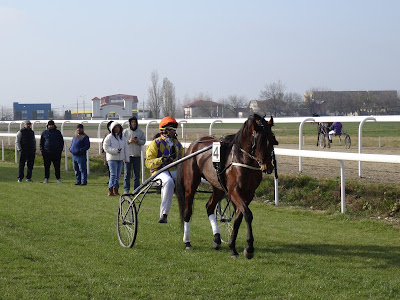Ploiești (Romanian pronunciation: [ploˈjeʃtʲ]; older
spelling: Ploești) is the county seat of Prahova County and lies in the
historical region of Wallachia in Romania. The city is located 56 km (35 mi)
north of Bucharest. The area of the city is around 60 km2. It borders the
Blejoi village in the north, Bărcănești and Brazi villages in the south,
Târgșoru Vechi in the west and Bucov village in the east. Ploiești has direct
access to the Prahova Valley, one of the most important alpine tourism areas in
Romania.
Ploiești lies in the center of Muntenia, in the
central-northern part of the Romanian Plain. It lies close to the capital city
Bucharest and it had close connections with the capital city throughout the
centuries. Ploiești lies at the 25°E meridian and the 44°55’N parallel (north).
The city occupies a total surface of around 60 km2, out of which 35 km2 is
suburban settlements. There exist two rivers in the proximity of the city:
Prahova river, on the south-west, briefly passes through the city through the
Brazi settlement and Teleajen River passes through the Blejoi, Bucov, Berceni
villages. The city lies on Dâmbu River, which springs from the hills around the
Băicoi town. Nowadays the Dâmbu River doesn't have a high flow rate.
Though likely settled much earlier, Ploiești was first
mentioned in documents in the 16th century, during the reign of Mihai Viteazul
(Michael the Brave), Prince of Wallachia. It flourished as a center for trade
and handicraft manufacturing in the 17th and 18th centuries. The road
connecting Ploiești to Brașov opened in 1864, and the railway arrived in 1882.
Many schools and hospitals date from this time. In the mid-19th century the
Ploiești region was one of the world's leading oil extraction and refinery
sites. The world's first large refinery opened at Ploiești in 1856-1857, with
US investment. The city is also remembered as the site of the self-styled
Republic of Ploiești, a short-lived 1870 revolt against the Romanian monarchy. Ploiești's
oil production made it a target during the invasion of Romania by the Central
Powers in 1916, but a British Army operation under John Norton-Griffiths
destroyed production and sabotaged much of the infrastructure of the industry.
Geology
The Mio-Pliocene Zone in the Ploiești region has been
exploited for hydrocarbons and coal since the 19th Century. The zone extends
from the flysch on the north to the Moesian Platform on the south. The zone is
marked by alternating deposits of Clay, Marl, Shale and Sand, conglomerate,
Salt and Limestone. Structural traps and stratigraphic traps are formed from
Salt Diapirism which gave rise to anticline folds and faulting. There are four
major alignments of the anticlines, all parallel to the Carpathian Range.
Pliocene sands are the main oil and gas producers, in particular the Meotian
(60%) and Dacian (29%), followed by the Miocene Sarmatian (5%) but some oil
exists in Miocene Helvetian and Oligocene sandstones. Major producing
structures include Moreni-Gura Ocnitei, Baicoi-Tintea and Boldesti.
The history of trap race roots back deeply, at the moment
the Racetrack from Ploiesti is the only one in Romania where racing takes place
on a regular basis.
We have made a selection of important data concerning this
sportive discipline:
1922: the construction of the Racetrack of Bucharest, horse
race base for trap.
1924: takes place the first Romanian Trap Race Derby. This
race is the most important horse competition, nominating the best national trap
racer, who is 4 years old. The event has organized every year and not even the
World War II interrupts it.
March 1960: The Trap Racetrack in Bucharest is pulled down
by order of Gheorghe Gheorghiu Dej. The first horse race base in Romania was an
exact copy of the famous “Longchamps” in France. On the location of the
racetrack, “Expoziția României” (Romexpo in present times) was built. The
entire horse racing activity is moved to Ploiesti.
1961: takes place the first Trap Derby on Ploiesti
Racetrack, after relocation.
April 2004: the municipality who is the administrator of
horse race base, decides to privatize the Racetrack of Ploiesti, and the
auction is won by the Italian company Ippodromi &Citta.
Mai 2006: the entire horse racing activity in Ploiesti
Racetrack stops, due to the incompliance of the Italian company Ippodromi
&Citta of several contractual provisions.
September 2007: Prahova Tribunal registers the first court
proceeding that represents a request of material losses of the municipality to
Ippodromi & Citta company, for delaying the investments.
December 2009: Appeal Court of Ploiești decides that the
Ploiesti Racetrack will be one again the property of Ploiesti City Hall,
Ippodromi & Citta Company being in total incompliance with its contractual
provisions.
September 2010: the horse races start once again on the Ploiesti Racetrack, after a 4 years absence, but for a short time and will be closed for restoration, until 2016.
November 2016: Re-opening the race track with demo traps for different horse classes.
Old times trap racers
Romania occupies the fifth position in the world on horses
with a number near to 900.000. Most of the 10,000 purebred horses are the
property of the state, and the rest belongs to several private owners. And,
although in Romania the horse race becomes extinct, private owners from other
countries come in our country to purchase purebred horses, which are used,
guess what?… for racing.
English, Arabian, Lipitan, Trap Racer, Hutul purebreds, are
only few of our breeds. Think about it, other countries had never heard of such
a thing in 1924, when in Romania organized its first horse race …




















































